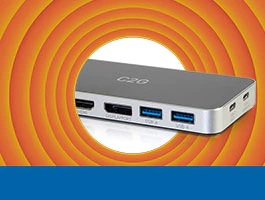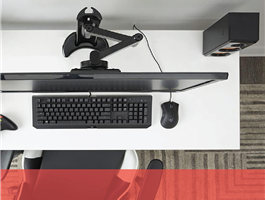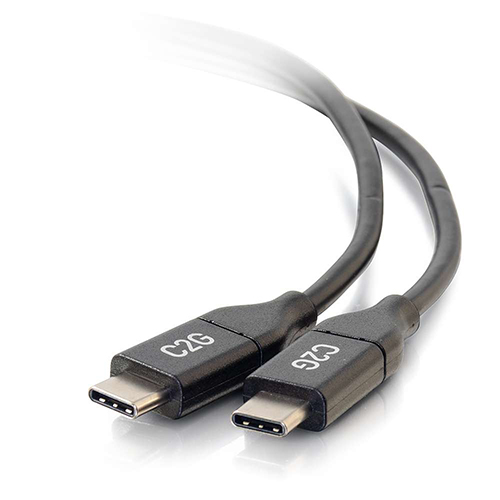Why you need a docking station in your AV workstation design
Posted on 8/9/2020 7:00:00 PM by Legrand AV Team
Laptops, tablets and smartphones have changed the world through their unique ability to allow huge amounts of information to be accessed from small devices in a convenient and (sometimes) intuitive manner. These devices have also been the source of much frustration because, even though all of humanity’s combined knowledge might be only a click away, it’s often quite difficult to get that content off the device and into an AV delivery system that supports real productivity.
Laptops have been transitioning from proprietary dock ports to USB-C ports recently, increasing the need for universal docking stations, especially in our current work from home environment.
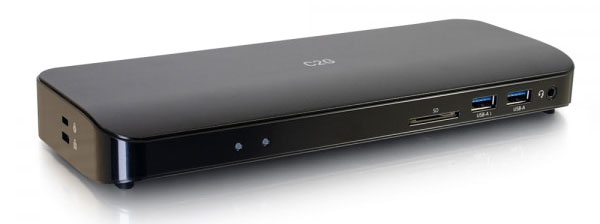
Universal docking stations were created to turn the USB port of a computer into a special kind of interface. A dock, connected to your laptop computer by a single USB cable, may support multiple video displays, multi-channel audio, gigabit connectivity to the LAN, and a plethora of peripherals. Dual displays in particular have been shown to increase productivity with easier access to multiple programs at once. The 54429 and 54439 docking stations are particularly helpful with this capability. Connecting directly to a network rather than through Wi-Fi may also be a requirement by company security. Many laptops do not offer a wired port.
Some docking stations are operating-system agnostic while others only work inside a specific family group. They may relieve us from the worry of finding ever-longer cables with which to connect our chosen device by providing a clear demarcation point, but they also bring compatibility problems. These problems include, but are not limited to, the hub or dock supporting the same charging method, the same power management standard, or how and which data can pass through to another device. Docking stations simplify these issues.
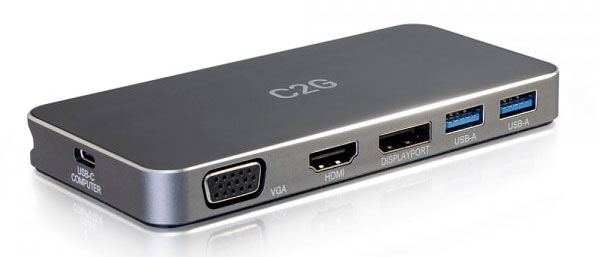
At its core, the docking station is a physical multimedia gateway that bridges portable and installed technology. A contemporary docking station is the interface where network LAN, AV, and peripheral device connectivity occurs, charging power is delivered, signals are transposed to desired formats which are then routed and distributed. The docking station is a powerful and important element of any good AV design.
For such an important piece of gear, it can be surprisingly difficult to select the right docking station for your application. Technology’s been changing in fits and starts for what feels like an eternity. USB 2.0 was released in 2000 and ruled the roost until USB 3.0 made its appearance in late 2008. The challenge is that these formats didn’t enjoy widespread application in the AV community until the proliferation of desktop conferencing and streaming media reached critical mass in 2010 and beyond. High performance AV applications for docking solutions have been playing catch-up ever since.
The ensuing decade saw the demand for ever greater transfer speeds bring us USB 3.1 Gen 1, then USB 3.1 Gen 2, and Thunderbolt 3.0. Soon we’ll be calling all of this USB 4.0. This alphabet soup of USB formats is empowered and enabled by a new physical connection that’s been optimized for next-generation data and AV demands. USB Type-C is here, and it will profoundly change the nature of docking systems.
See more USB-C docking stations at the C2G site.
Learn more about universal docking stations and USB-C ports in our newest Whitepaper,
There's a Class For That
What’s Up, Dock?
What’s Up, Dock? Putting USB Type-C Docking Stations in Perspective
The challenge for future AV designers will be integrating mobile devices with fixed AV assets. Learn how docking stations solve the problem.
Optimizing Desktop AV
Optimizing Desktop AV for Productivity
Explore techniques for optimizing your desktop AV experience, including how to calculate the ideal display size, resolution and more!



